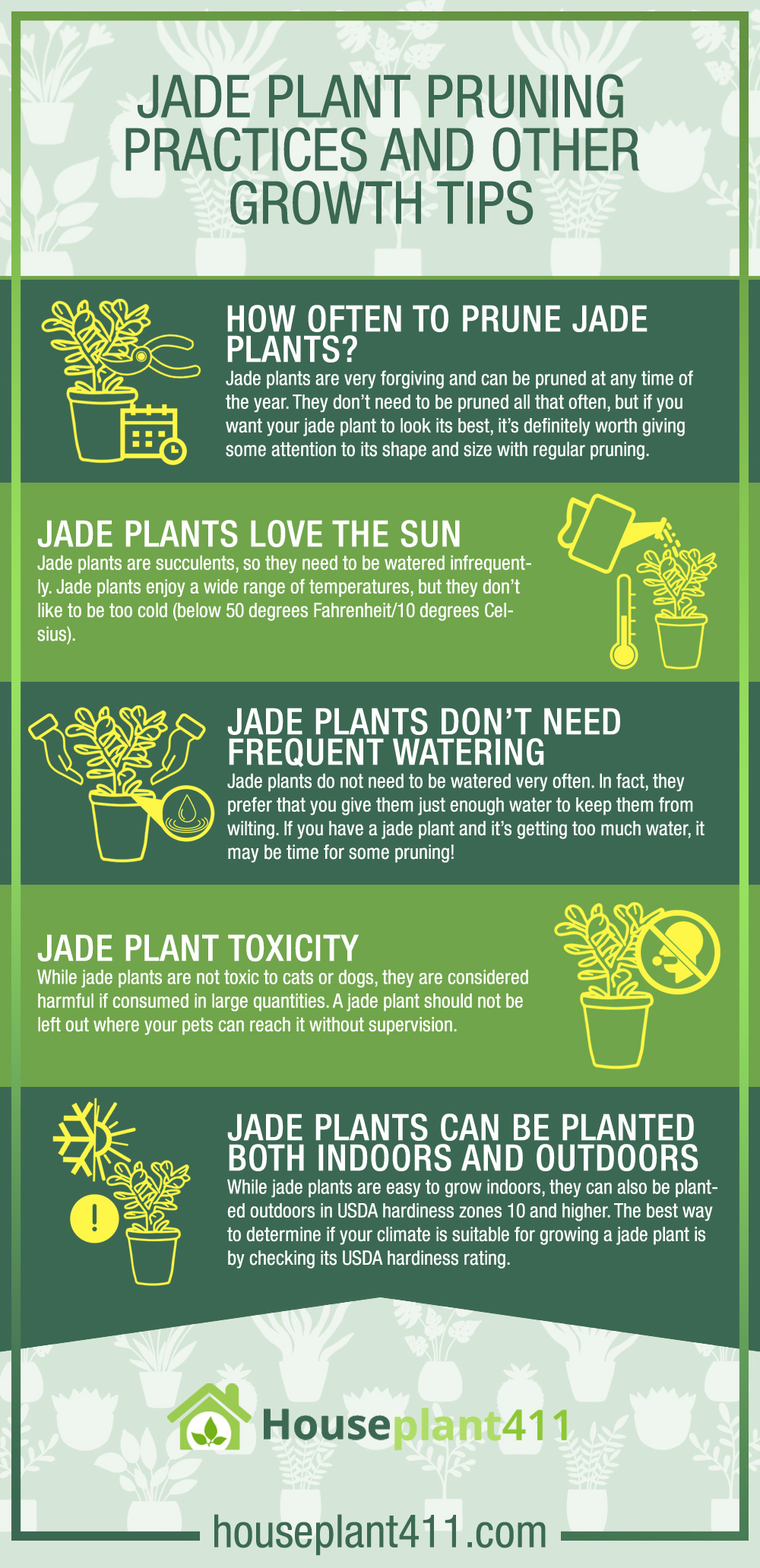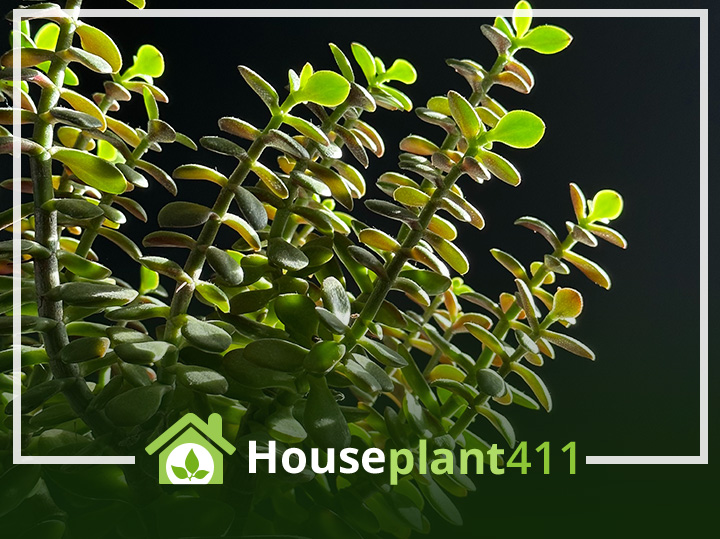Jade plants (Crassula argentea) are succulent houseplants that have thick, waxy leaves and stem. These green leafy plants have a variety of uses, including bedding and table decorations around the home. Jade plants also make excellent hanging baskets for your porch or patio if you live in an area that gets at least 6-8 hours of direct sunlight each day.
There are many different types of jade plants, including multiple species with slightly different characteristics and growing habits. In this article, we take a look at the right Jade plant pruning practices to follow at home. We also look at certain growth tips that can be helpful.
How Often to Prune Jade Plants?
Jade plants are very forgiving and can be pruned at any time of the year. They don’t need to be pruned all that often, but if you want your jade plant to look its best, it’s definitely worth giving some attention to its shape and size with regular pruning.
The most common reason for pruning a jade plant is to control its size; if left unpruned, it can become quite large over time–sometimes reaching more than 10 feet (3 meters) tall!
It’s important not only because these plants tend toward sagginess when left unattended but also because they’ll eventually grow out of their containers or pots if allowed too much room inside your house or office space.
Regularly trimming off dead leaves will help keep your jade healthy and attractive looking without sacrificing its overall health or longevity; this will ensure that it lives longer than other types of succulents would under similar conditions.
Jade Plants Love the Sun
Jade plants are succulents, so they need to be watered infrequently. Jade plants enjoy a wide range of temperatures, but they don’t like to be too cold (below 50 degrees Fahrenheit/10 degrees Celsius). They also can tolerate a wide range of light conditions; however, it’s best to keep them in bright light year round.
If you want your jade plant indoors, choose an area with indirect sunlight and good air circulation during the winter months when it’s more likely for the plant’s leaves and stems from suffering damage from frost burn.
Jades do best when grown outdoors where there is plenty of direct sunlight available all year long–but if you live somewhere that doesn’t get much sun at certain times during winter months even though temperatures aren’t freezing yet (or vice versa), consider keeping your succulent indoors until spring arrives again before moving back outside again!
Jade Plants Don’t Need Frequent Watering
Jade plants do not need to be watered very often. In fact, they prefer that you give them just enough water to keep them from wilting. If you have a jade plant and it’s getting too much water, it may be time for some pruning!
To determine if your jade plant needs watering, simply stick your finger into the soil until it feels dry about an inch down (or use a trowel). If the soil feels moist at this depth, then don’t water yet; if it feels dry here, then go ahead and give your plant some water. You should also check this depth each day until it rains–it’s important not to let them sit in soggy soil for too long!
Jades should never be soaked or allowed to sit in standing water after being watered; this can cause root rot over time, which will kill off your beautiful houseplant before long!
Jade Plant Toxicity
While jade plants are not toxic to cats or dogs, they are considered harmful if consumed in large quantities. A jade plant should not be left out where your pets can reach it without supervision.
If you have a jade plant and want to keep it away from your pet’s paws, there are some options for keeping them at bay:
You can purchase a cat scratcher that has an opening on one side so that when your cat scratches at the pad of this scratching post, he won’t be able to get his paws on any part of the jade plant. This way he won’t be able to dig around under leaves either!
Another option is placing the entire potted plant inside another larger container (like an aquarium) with only enough room for roots at its base level so nothing else can grow above ground level within reachable distance from paws or noses–especially since these plants tend toward tall growth patterns anyway!
Jade Plants can be Planted Both Indoors and Outdoors
While jade plants are easy to grow indoors, they can also be planted outdoors in USDA hardiness zones 10 and higher. The best way to determine if your climate is suitable for growing a jade plant is by checking its USDA hardiness rating. This rating indicates the average minimum temperature that a particular plant can withstand before dying from cold exposure.
If you live in an area with temperatures above 55 degrees Fahrenheit during the winter months, you can safely plant your jade outdoors with protection from frosty nights. Jade plants need full sun exposure when planted outdoors; however, they will do fine under partial shade if there is no direct sunlight available at all times of day or year-round in certain areas where full sun exposure isn’t possible (such as shady patios).

Conclusion
If you have a jade plant, prune it as needed and give it plenty of sunlight. The more sunlight your jade gets, the more flowers it will produce. If you want to keep your plant indoors all year round, try placing it near a window with indirect light during winter months when there is not enough sun for them outside.

